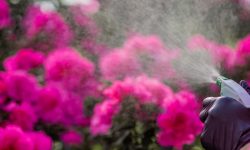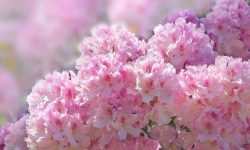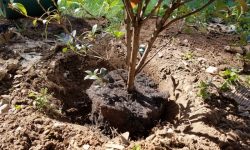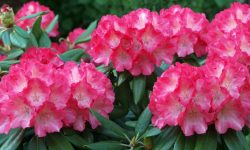Peonies are among the most beloved perennial flowers, gracing gardens with their magnificent, often fragrant, blooms in late spring and early summer. The sheer beauty of their large, opulent flowers makes the short blooming season feel even more precious. However, once the last petal falls, a common question arises: what comes next?
Many gardeners might assume that with the flowers gone, the work is done. On the contrary, peony care after blooming is critically important for the long-term health, vigor, and future flowering performance of these cherished plants. Neglecting your peonies once their floral show concludes can significantly impact next year’s spectacle, leading to fewer, smaller, or less vibrant blooms.
This comprehensive guide will delve into the essential post-bloom care practices for all types of peonies – herbaceous, tree, and intersectional (Itoh) – ensuring your plants remain robust, disease-free, and poised to deliver an even more breathtaking display in seasons to come.
Why Post-Bloom Peony Care is Essential
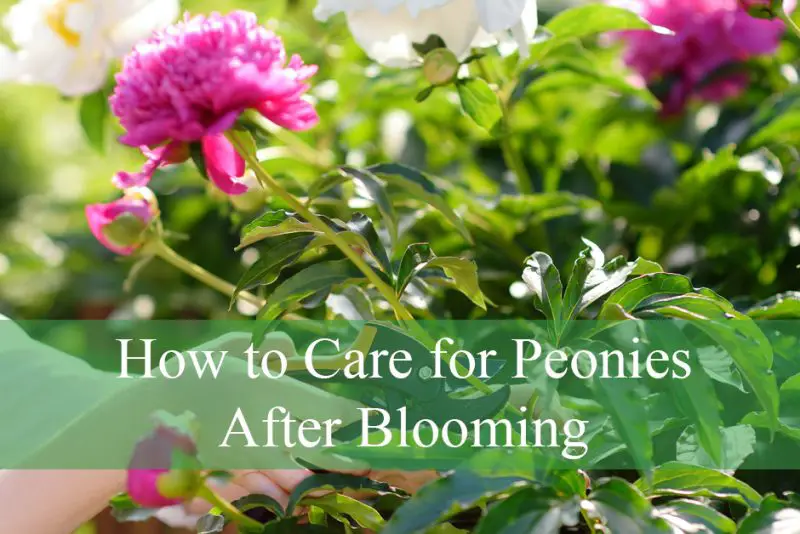
Understanding the fundamental reasons behind diligent post-bloom care will underscore its importance and guide your actions. It’s not just about tidiness; it’s about investing in the future of your peony.
Firstly, proper after-bloom care directs energy towards root and bud development. Once peonies finish flowering, their primary focus shifts from producing showy blooms to building robust root systems and developing the “eyes” or buds that will form next year’s stems and flowers. By removing spent flowers and maintaining healthy foliage, you ensure that the plant’s energy reserves are fully channeled into these crucial underground processes, rather than being wasted on seed production or supporting unhealthy leaves.
Secondly, it enhances plant health and vigor. Healthy foliage acts as the plant’s solar panel, photosynthesizing sunlight into the energy needed for future growth. Maintaining this foliage, providing adequate moisture, and addressing any issues promptly after blooming helps the plant build strength. Conversely, neglecting the foliage or allowing disease to take hold can severely weaken the plant, making it less resilient to environmental stresses and reducing its ability to bloom effectively in subsequent years.
Thirdly, crucial post-bloom care prevents disease and pest issues. Spent flowers, if left on the plant, can become breeding grounds for fungal diseases like botrytis blight, especially in humid conditions. Dead or decaying foliage can also harbor fungal spores or provide hiding spots for pests. Promptly removing spent blooms and diseased foliage significantly reduces disease pressure and helps maintain a cleaner, healthier garden environment.
Furthermore, proper post-bloom care contributes to the longevity of the peony plant. Peonies are renowned for their lifespan, often blooming for decades with minimal intervention. However, consistent good care, particularly after the demanding flowering period, ensures they retain their vitality and continue to be a star performer in your garden for generations. It sets the stage for continuous success.
Finally, while not directly related to flowering, post-bloom care, particularly deadheading, contributes to the aesthetic appeal of the garden. Removing faded, unsightly flowers immediately improves the visual cleanliness of your landscape, allowing other plants to shine and maintaining a pristine appearance even after the peony’s peak bloom.
Deadheading Peonies: The First Critical Step
Deadheading is the immediate and most visible task once your peonies have finished their glorious show. It involves removing the spent flowers and is a critical step for all peony types, though the approach varies slightly.
Why Deadhead?
The primary reason to deadhead peonies is to prevent seed formation. If a peony is allowed to produce seeds, it diverts a significant amount of the plant’s energy away from developing its root system and forming next year’s flower buds. This energy conservation is paramount for ensuring a robust bloom in the following season. By deadheading, you signal to the plant that its reproductive task is complete, and it should focus on vegetative growth and energy storage. Additionally, removing faded, browning flowers immediately improves the aesthetic appeal of your garden, tidying up the plants and making space for the remaining healthy foliage to be appreciated.
How to Deadhead Herbaceous Peonies
For herbaceous peonies, which have soft, non-woody stems that die back to the ground each winter, deadheading is straightforward. As soon as the petals begin to drop or the flower fades and discolors, cut the flower stem back to a strong leaf. Make your cut just above the first healthy, full leaf below the spent bloom. It is important not to cut the stem back to the ground at this stage, as the remaining stem and foliage are vital for photosynthesis throughout the rest of the growing season. Use clean, sharp pruners to make a clean cut, minimizing damage to the plant. This method ensures maximum foliage remains to produce energy for next year’s growth.
How to Deadhead Tree Peonies
Tree peonies have woody stems that remain above ground all year, forming a permanent shrub-like structure. Deadheading these is similar to herbaceous peonies in principle. Once the flower has faded, cut the spent bloom just below the flower head, removing only the unsightly petals and the very short stem segment directly beneath them. Be very careful not to cut into the woody stem or remove any leaves, as these woody stems are the structure for future blooms. You are simply tidying up the spent flower without impacting the underlying woody structure or foliage.
How to Deadhead Intersectional (Itoh) Peonies
Intersectional or Itoh peonies are hybrids between herbaceous and tree peonies, possessing characteristics of both. They have strong, semi-woody stems that typically die back mostly to the ground in winter but can retain some woody structure, especially in milder climates. For deadheading Itoh peonies, treat them largely like herbaceous peonies. As the flowers fade, cut the flower stem back to the first strong, healthy leaf or a viable side shoot below the spent bloom. Avoid cutting the entire stem to the ground unless it shows signs of damage or disease. The goal is to maximize the remaining foliage for energy production.
Foliage Care After Blooming: The Unsung Hero
While the flowers capture all the attention, the foliage of a peony is the unsung hero responsible for next year’s show. Proper care of the leaves after blooming is non-negotiable.
Why Foliage is Crucial
The green leaves of your peony plant are its energy factories. Through photosynthesis, they convert sunlight into the sugars and starches (carbohydrates) that the plant needs to grow, develop a strong root system, and, crucially, to form the flower buds for the next growing season. If the foliage is damaged, removed too early, or allowed to suffer from disease, the plant’s ability to store this vital energy is severely compromised. This leads directly to weakened plants, reduced vigor, and ultimately, fewer and smaller blooms in subsequent years. Therefore, maintaining healthy, robust foliage throughout the summer and fall is paramount for a successful bloom cycle in the following spring.
Maintaining Healthy Foliage
After deadheading, your primary goal is to keep the remaining foliage healthy and green for as long as possible, ideally until a hard frost naturally causes it to die back.
Firstly, provide adequate water. Peonies, especially during dry spells in summer, benefit from deep watering. While they are relatively drought-tolerant once established, consistent moisture helps the foliage remain lush and productive. Aim for about an inch of water per week, either from rainfall or supplemental irrigation.
Secondly, monitor for pests and diseases. Regularly inspect the foliage for any signs of common peony ailments. Botrytis blight (gray mold) is a common fungal disease that can affect leaves, causing brown spots and eventually wilting. Powdery mildew can also appear as a white, powdery coating on leaves. Address these issues promptly. Remove any affected leaves immediately and dispose of them in the trash (not compost). For more severe outbreaks, consider an appropriate fungicide, following product instructions carefully. Early detection and intervention are key to preventing widespread problems.
Thirdly, resist the urge to cut back healthy foliage early. This is one of the most common mistakes gardeners make. Even if the foliage looks somewhat tired after blooming, it is still actively photosynthesizing and storing energy. Do not cut back herbaceous peony foliage to the ground until it has naturally yellowed or browned and died back, usually after the first hard frost in late fall. This allows the plant to draw as much energy as possible back into its roots for winter storage. For tree and Itoh peonies, simply maintain their existing healthy foliage; it remains part of their permanent structure.
Fertilization and Soil Care After Blooming
Once the bloom period is over, proper fertilization and continued attention to soil health play a supporting, but important, role in preparing your peonies for their next magnificent display.
Fertilizing Peonies Post-Bloom
The most crucial fertilization period for peonies is typically in early spring, just as they emerge from dormancy, or in the fall as they prepare for winter. However, a light feeding after blooming can be beneficial, especially if your soil is poor or if the plants experienced a particularly heavy bloom. If you choose to fertilize post-bloom, do so with a balanced, slow-release granular fertilizer (e.g., 5-10-10 or 5-10-5, or a specialized rose/flower fertilizer with lower nitrogen and higher phosphorus/potassium). The emphasis should be on phosphorus (for root development) and potassium (for overall plant health and disease resistance), rather than high nitrogen, which promotes leafy growth at the expense of flowers.
Apply the fertilizer sparingly, sprinkling it around the drip line of the plant (where the roots typically extend) and gently scratching it into the top inch or two of soil. Always follow the product’s instructions carefully. Avoid over-fertilizing, as too much nitrogen can lead to lush foliage but few flowers, and excessive fertilizer can burn the roots.
Mulching for Soil Health
Applying a fresh layer of organic mulch after blooming can provide numerous benefits for your peony’s long-term health. A 2-4 inch (5-10 cm) layer of well-rotted compost, shredded bark, or leaf mold around the base of the plant helps to:
- Conserve soil moisture: Reducing water evaporation, especially during hot summer months.
- Regulate soil temperature: Keeping the soil cooler in summer and warmer in winter.
- Suppress weeds: Reducing competition for water and nutrients.
- Improve soil structure: As organic mulch breaks down, it enriches the soil, improving its texture, drainage, and aeration.
When applying mulch, always ensure it is kept a few inches away from the crown (the point where the stems emerge from the ground) of herbaceous peonies and the woody stems of tree and Itoh peonies. Piling mulch directly against the crown can trap moisture, leading to rot and fungal issues.
Pest and Disease Management in the Post-Bloom Season
Even after the flowers have faded, peonies are not immune to pests and diseases. Proactive management in the post-bloom season is crucial for preventing problems from escalating and impacting next year’s health.
Common Post-Bloom Issues
Botrytis Blight (Gray Mold): This is the most common and destructive fungal disease affecting peonies. It can manifest as brown spots on leaves, blackening stems at the soil line, and eventually cause entire stems to wilt and collapse. After blooming, monitor vigilantly for any signs of botrytis, especially in humid conditions. Immediate removal of affected plant parts is critical. Cut stems several inches below any visible symptoms into healthy tissue, and dispose of the diseased material in the trash (do not compost). Ensure good air circulation by thinning overcrowded plants during dormant pruning.
Powdery Mildew: This appears as a white, powdery coating on the surface of leaves, typically in late summer or early fall. While usually not fatal, it can reduce the plant’s photosynthetic capacity. Ensure good air circulation and consider a mild fungicide if severe. Remove affected leaves.
Ants on Peonies: While ants are often seen on buds (attracted to the sugary nectar), they are generally harmless and disappear after blooming. No specific post-bloom treatment is usually necessary for ants themselves.
Other Pests: Keep an eye out for common garden pests like aphids or spider mites. While less common after blooming, stressed plants can be susceptible. Treat as needed with insecticidal soap or other appropriate, targeted measures.
Sanitation and Prevention
The best defense against post-bloom problems is good garden sanitation. Always remove all dead, damaged, or diseased plant material promptly throughout the growing season and especially during dormant pruning. This reduces the inoculum for future disease outbreaks. Clean your tools regularly with rubbing alcohol or a bleach solution (1 part bleach to 9 parts water) between cuts, especially after cutting diseased material, to prevent spreading pathogens. Ensure good air circulation around your peonies by not overcrowding them with other plants. Proper spacing and intelligent pruning are your primary tools for disease prevention.
Preparing Peonies for Winter (Late Fall/Early Winter)
The final phase of post-bloom care involves preparing herbaceous peonies for their winter dormancy. Tree and Itoh peonies, with their woody stems, require different winter considerations.
For Herbaceous Peonies
This is the only time you should cut back the foliage of herbaceous peonies to the ground. Wait until after the first hard frost has caused the foliage to naturally yellow, brown, and collapse. This signals that the plant has drawn all available energy back into its roots for storage over winter. Once the leaves are fully spent, cut all stems back to about 1-2 inches (2.5-5 cm) above the ground. Remove all cut foliage from the garden and dispose of it in the trash (do not compost), especially if there were any signs of fungal disease during the growing season. This helps to eliminate overwintering fungal spores and reduces the potential for disease next spring. In very cold climates, a light layer of winter mulch (straw, pine needles) can be applied over the crown after the ground freezes, but this is often not necessary for established plants and should be removed in early spring.
For Tree Peonies
Tree peonies have woody stems that remain above ground all year. Do not cut these back in the fall or winter. Their woody structure is permanent. The only pruning needed at this time is to remove any dead, damaged, or crossing branches if you spot them, and to remove any leaf litter from around the base to reduce disease risk. In extremely cold climates, providing some winter protection, such as wrapping the plant in burlap or a breathable tree wrap, might be beneficial, especially for young plants.
For Intersectional (Itoh) Peonies
Itoh peonies often have strong, semi-woody stems that may or may not fully die back to the ground depending on the climate. In colder zones, they generally die back completely. In milder zones, some woody structure might persist. In late fall, after a hard frost has caused the foliage to wither, cut the stems back to about 4-6 inches (10-15 cm) above the ground, leaving a few inches of woody stem. This provides a clear marker for where new growth will emerge in spring and helps maintain tidiness. As with herbaceous peonies, remove and dispose of all cut foliage.
Conclusion
The vibrant spectacle of peony blooms is undeniably the highlight of their season, but true peony artistry lies in the care provided after the last flower has faded. By diligently implementing post-bloom practices such as precise deadheading, nurturing healthy foliage, providing thoughtful fertilization and soil care, and engaging in proactive pest and disease management, you are actively investing in the future health and bloom potential of your cherished peonies. Remember, the seemingly simple act of cutting a spent flower or maintaining a healthy leaf contributes significantly to the magnificent display that will grace your garden next spring. Embrace these essential steps, and your peonies will repay you with decades of breathtaking beauty, reinforcing their status as truly invaluable garden perennials.

